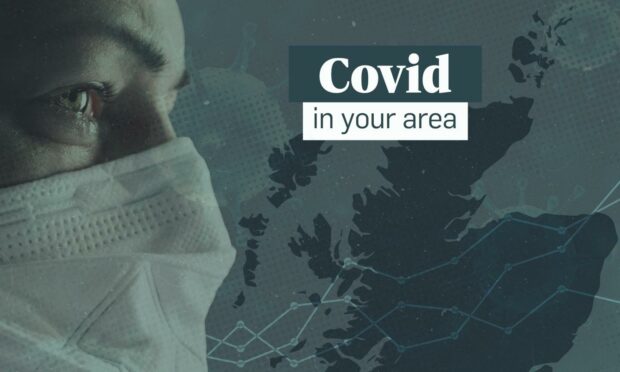Despite Covid-19 boosters being rolled out across the country, people are still being asked to exercise caution around coronavirus, as case numbers remain high.
Our interactive maps below show the case rate by intermediate zone for Aberdeen, Aberdeenshire, Highland and Moray. The islands have not been included as case numbers tend to be very low and are often suppressed as a result.
Each intermediate zone (IZ), represents an area, quite often a neighbourhood, within each local authority.
Hovering over each area will give additional information including the population of each neighbourhood, how many positive cases have been recorded there in the past seven days, and the seven-day case rate per 100,000 population – a measure which is used to compare areas with different populations against each other to accurately track the spread of the virus.
Below includes details for case rates accurate as of November 22, which was the latest information at the time of writing, as this data is subject to a three-day lag in being uploaded by Public Health Scotland.
What are case rates like in Aberdeen?
Although case rates in Aberdeen remain quite high, all areas are currently under a seven day case rate of 1,000 per 100,000 population – unlike other areas of Scotland.
The area with the highest seven day case rate per 100,000 population in Aberdeen on November 22, is Dyce with a case rate of 895.75.
This is followed by Summerhill with a case rate of 894.50 and Danestone, with a case rate of 757.38, both per 100,000 population.
In the previous seven day period, Dyce recorded 47 positive Covid-19 cases out of a population of 5,247, Summerhill saw 34 out of a population of 3,801 and Danestone had 30 positive Covid-19 cases in a population of 3,961.
What are case rates like in Aberdeenshire?
Like in Aberdeen, cases in Aberdeenshire are high, but not as high as some other areas of Scotland.
The three highest seven day case rates in Aberdeenshire were recorded in Ellon West, Gardenstown and King Edward and Ellon East respectively.
Ellon West had a seven day case rate per 100,000 population of 874.78, followed by Gardenstown and King Edward at 827.24 and Ellon East with 802.49.
Ellon West saw 35 positive Covid-19 tests in the previous seven days out of a population of 4,001, while Gardenstown and King Edward had 26 cases in a population of 3,143 and Ellon West 49 Covd-19 positive results out of 6,106 residents.
What are case rates like in Moray?
In Moray, the seven day case rates differ from as low as 220 per 100,000 population, to more than 1,300 per 100,000 population.
The map shows that New Elgin East had the highest seven day case rates per 100,000 of the population on November 22, with 1,134.64.
This is followed by Elgin Cathedral to Ashgrove and Pinefield with 833.33, then Heldon West, Fogwatt to Inchberry with 827.08, both per 100,000 population.
New Elgin East reported a total of 45 positive Covid-19 cases in a population of 3,966 within the previous seven day period, while the same numbers were 35 positive cases in Elgin Cathedral to Ashgrove and Pinefield out of a population of 4,200 and 43 in Heldon West, Fogwatt to Inchberry, out of a population of 5,199.
What are case rates like in the Highlands?
Case rates in the Highlands have been climbing in recent weeks – like in many other areas of Scotland.
The highest seven day case rate per 100,000 of the population was recorded in Badenoch and Strathspey South with 1006.45. This was followed by Thurso West with a case rate of 841.61 per 100,000 population, and Inverness East Rural, with 788.56 per 100,000 population.
Of the highest areas, Badenoch and Strathspey South saw 39 positive Covid-19 cases in the seven day period prior to November 22 out of a population of 3,875. Meanwhile, Thurso West also had 39 positive cases out of a population of 4,634, and Inverness East Rural 44 cases in a population of 5,594, both in the same time frame.
However, there were several areas within the Highlands in which seven day case rates were suppressed – which means there was less than two positive cases within the week period.
These were Inverness Merkinch, Ross and Cromarty South West, Ross and Cromarty North West, Caithness South and Caithness North East.
Where in Scotland has the highest case rates?
The chart below shows the top 10 neighbourhoods in Scotland with the highest seven day case rates per 100,000 population.
New Elgin East in Moray placed seventh on the list – the only north and north-east neighbourhood to be included.
Meanwhile, the below chart tracks the average seven day case rate for local authorities in the north and north-east.
At November 25, Moray had the highest case rate of the local authorities in the north and north-east with 498.85.
